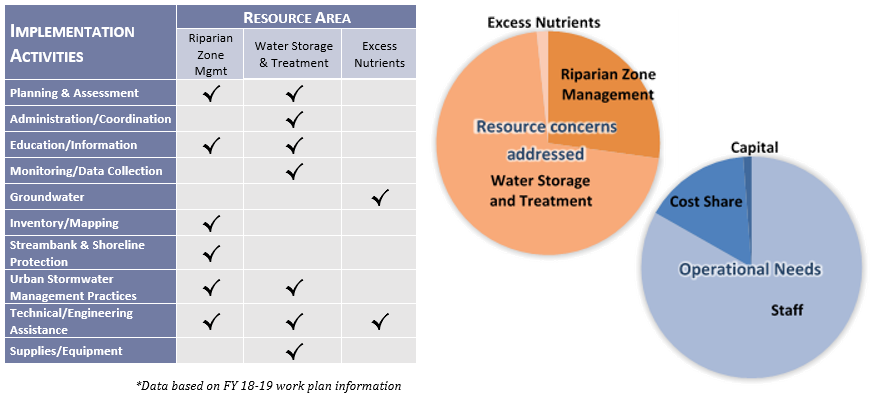Each year since 2016, soil and water conservation districts across the state, including ACD, have receiving a special allocation from the Clean Water Fund of the Clean Water, Land and Legacy Amendment to build statewide capacity to provide conservation related programs and services. Each district utilizes these funds differently to meet the needs of their constituents and natural resources. Following is a snapshot of how ACD relies on these funds.
District Capacity funds (DCF) have made the greatest difference in Anoka Conservation District (ACD) operations by serving as a highly adaptable funding source. We use DCF to tackle critical but small tasks that elevate our overall function and efficiency. Most individual projects and activities funded with DCF cost less than $5,000.
Education and Outreach: DCF has been used to create a natural resources Blog that is continually updated with timely content, a quarterly e-Newsletter that is distributed to key stakeholders and the public, and outreach materials including brochures, displays and animated videos; all of which are available at https://www.anokaswcd.org/educational.html.Inventory: ACD completed riverbank and lakeshore condition photo inventories for our major rivers (Rum and Mississippi) and many lakes, totaling over 50 miles of shoreline. Photos are uploaded to Google maps where they are available by using the StreetView function for the public, and ACD staff when fielding calls from landowners.
Planning and Analysis: Streambank and lakeshore photos were analyzed to determine erosion location and severity, enabling ACD to identify and rank potential projects based on cost-effectiveness for water quality benefits. This was the foundation to secure many grants. Similar analysis of wetland restoration opportunities facilitates targeted outreach efforts.
Technical Capacity: Building staff expertise through training and technology upgrades, including design software and survey equipment.
Technical Assistance: In 2020, DCF was used to help complete 198 site consultations, 19 surveys and designs, and construction management for 20 projects for landowners. Technical assistance is a critical service to achieve conservation on private lands.
Cost Share: DCF is used to supplement other funding to help projects such as shoreline and riverbank stabilizations over the finish line.
Project Life Extension: Approximately 25 landowners annually are provided project management guidance to extend the benefits of their project beyond the contracted life.

